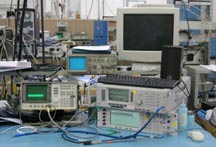Body
 (National Institute of Standards and Technology: Washington, D.C.) -- National Institute of Standards and Technology engineers, together with colleagues from industry and other standards organizations have completed a five-part series of standards designed to evaluate the accuracy—and thus usability—of manufacturing measurements. The standards, the last of which was published last month by the American Society of Mechanical Engineers, describe ways measurement personnel can communicate, evaluate and respond to uncertainties in manufactured part measurements. Adopting these standards on the shop floor should enhance manufacturing productivity at the same time that it minimizes scrapping of acceptable parts, unnecessary rework, and even litigation.
(National Institute of Standards and Technology: Washington, D.C.) -- National Institute of Standards and Technology engineers, together with colleagues from industry and other standards organizations have completed a five-part series of standards designed to evaluate the accuracy—and thus usability—of manufacturing measurements. The standards, the last of which was published last month by the American Society of Mechanical Engineers, describe ways measurement personnel can communicate, evaluate and respond to uncertainties in manufactured part measurements. Adopting these standards on the shop floor should enhance manufacturing productivity at the same time that it minimizes scrapping of acceptable parts, unnecessary rework, and even litigation.…
Want to continue?
Log in or create a FREE account.
By logging in you agree to receive communication from Quality Digest.
Privacy Policy.
Add new comment